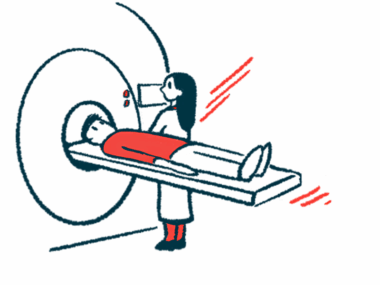Recurrent MS Disability Progression Measures May Aid Trial Efficiency
Fewer subjects needed using recurrent event endpoint compared with first event analysis
Written by |

Measuring disability progression every time it occurs, rather than just tracking whether it occurs, could improve the statistical power of clinical trials in multiple sclerosis (MS), particularly for progressive forms of the disease.
That’s according to scientists at Roche and several academic institutions who published their findings in the Multiple Sclerosis Journal. The study, “Recurrent disability progression endpoints in multiple sclerosis clinical trials,” was funded by Roche.
Clinical trials are studies with human participants that serve as a gold standard for determining whether a potential therapy works. In MS trials, one of the most common measures of effectiveness is confirmed disability progression, or CDP.
CDP occurs when a participant exhibits worsening disability at one clinical visit that’s still present at a later visit, usually after either 12 weeks (12-week CDP) or 24 weeks (24-week CDP). Clinical trials that show therapies can reduce the proportion of patients who have CDP have served as proof of many treatments’ effectiveness.
In this study, the scientists argue that merely counting the participants who have at least one CDP event risks missing important data, particularly in progressive MS types marked by a gradual worsening of symptoms over time.
“Patients will continue to progress after reaching the first CDP event, especially those with progressive MS,” the researchers wrote. “The disease course after a first CDP event is meaningful. … Experiencing several CDP events in a given observation time would typically have a higher negative impact on quality of life than experiencing only one CDP event.”
The researchers proposed instead to use a measure called “recurrent CDP” as an endpoint — using mathematical models to account for any time a patient had CDP, regardless of whether it’s the first time.
“Accounting for recurrent CDP events in estimating treatment effects promises to better capture the long-term patient experience, as well as increase statistical power,” they wrote.
After developing models to calculate CDP based on scores from the Expanded Disability Status Scale (EDSS), the researchers used them to analyze data from three Phase 3 clinical trials that supported the approval of Ocrevus (ocrelizumab) for relapsing and progressive forms of MS. Ocrevus is a CD20 inhibitor sold by Genentech, a member of the Roche group.
The OPERA I (NCT01247324) and OPERA II (NCT01412333) trials tested Ocrevus against an older approved therapy, Rebif (interferon beta-1a), in more than 1,600 people with relapsing MS. The ORATORIO (NCT01194570) trial tested Ocrevus against a placebo in 732 patients with primary progressive MS (PPMS), ultimately supporting Ocrevus as the first approved therapy for this type.
Results from the analyses showed that in OPERA I, 31 patients on Ocrevus and 50 on Rebif had 12-week CDP at least once, although six patients on Rebif had a 12-week CDP event twice during the study and one on Ocrevus had three events. In total, there were 33 and 56 events for patients on Ocrevus and Rebif, respectively, which corresponded to an increase in events of 6.5% and 12% compared with an analysis of first events only.
In OPERA II, the respective increase was 4.5% with Ocrevus and 9.5% with Rebif. In ORATORIO, the increase was 18.8% with Ocrevus compared with 29.2% with a placebo. Analyses using 24-week CDP yielded similar results.
Based on these figures, the researchers estimated using recurrent CDP would provide just less than 10% more data points for analyses in relapsing MS trials and more than 20% more data points in progressive MS trials. They estimated a trial using recurrent CDP would need fewer participants to get a statistically meaningful result.
“We conservatively estimated that a [PPMS] trial powered to a recurrent event endpoint would require at least 13% less subjects compared with a trial powered for the time-to-first-event analysis,” the researchers wrote. “For all trials and confirmation period durations (12 and 24 weeks), the treatment effect on the recurrent events was comparable to the time-to-first-event analysis.” However, the recurrent event analysis had “narrower confidence intervals,” meaning there was more statistical confidence in the results.
The scientists then used mathematical models to conduct a simulated study with different amounts of heterogeneity (difference in response among the participants). In these simulations, first-event and recurrent CDP analyses showed similar accuracy when heterogeneity was low, but the recurrent analyses were markedly more accurate at identifying the treatment effect in simulations with high heterogeneity.
“As a consequence, 13% is a conservative estimate of the sample size savings associated with recurrent event analysis in our scenarios,” the team concluded.






